ASRock Z87 OC Formula Overclocking Motherboard Review
Author: Dennis Garcia
Published: Monday, August 19, 2013
Benchmarks - Overclocked
As with all of our reviews, we pit the default speed system against the overclocked one in a head-to-head byte match. The effective overclock for these tests is 4.6GHz @ 44x multiplier and 105 BLCK. The results are show below.
CPU-Z
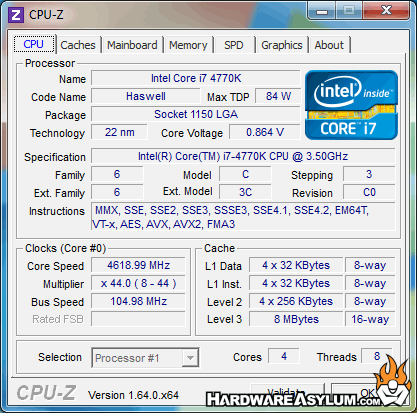
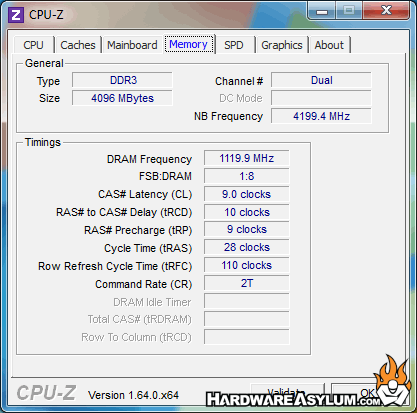
SiSoft Sandra
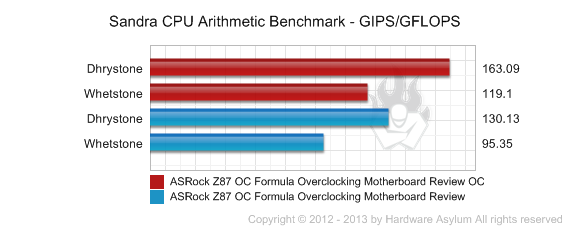
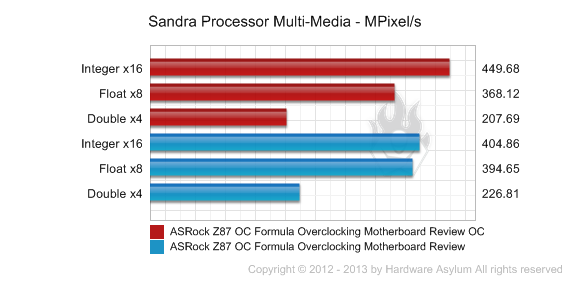
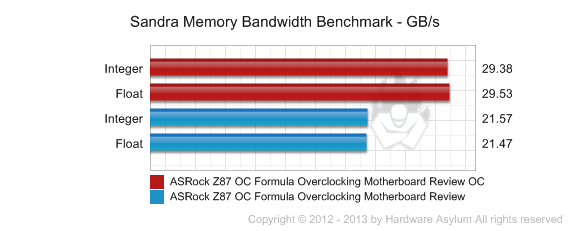

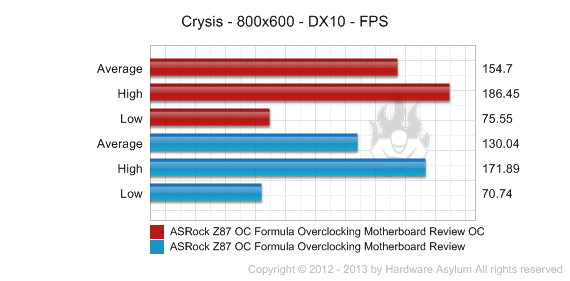

Overclocking Conclusion
When overclocking it is important to find a "sweet spot" where the performance curve tops out and still remains stable with a reasonable amount of heat production. With this system we found that the 4770K runs HOT and by hot we mean extremely warm over previous Ivy and Sandy bridge processors. Most of this heat can be attributed to the smaller CPU die and difficulty with heat transfer but can also be attributed to the onboard voltage regulator which is now part of the CPU. These things combined has made Haswell heat bound meaning that short of extreme cooling our/your overclocks will be limited.
Overclocking the Z87 OC Formula was pretty straight forward and can be done in a variety of ways. We will say that the UEFI implementation is somewhat "raw" in that you not only need to know what it takes to run a certain frequency but you also need to know what the dependences are. For instance boosting the Core i7 4770K using straight multiplier changes works quite well until you start to over extend the Unicore. Some systems will adjust this frequency for you following either the Turbo frequency rules or but also makes the multiplier lower than it should be. On the OC Formula you can adjust each independent of each other (like on most boards) but, defaults to the same multiplier as the CPU.
The UEFI has two "auto up" menus to choose from. The first is the Nick Shih overclocking profiles designed for LN2 overclocking. These profiles start at 5.8Ghz and go up to 6.6Ghz, keep in mind that all these do is auto set the frequencies, it is up to the user to adjust the proper voltages and extreme cooling is a must. The secondary overclocking menu is a little more docile with frequencies between 4Ghz and 4.8Ghz. We tried a few of these and found them to overvolt our system beyond what was needed to run. This was likely done for compatibility reasons but we find it scary how agressive the settings were. It would be our recommendation to use these menus as a starting point and tune for your processor from there.
Overclocking the Z87 OC Formula was pretty straight forward and can be done in a variety of ways. We will say that the UEFI implementation is somewhat "raw" in that you not only need to know what it takes to run a certain frequency but you also need to know what the dependences are. For instance boosting the Core i7 4770K using straight multiplier changes works quite well until you start to over extend the Unicore. Some systems will adjust this frequency for you following either the Turbo frequency rules or but also makes the multiplier lower than it should be. On the OC Formula you can adjust each independent of each other (like on most boards) but, defaults to the same multiplier as the CPU.
The UEFI has two "auto up" menus to choose from. The first is the Nick Shih overclocking profiles designed for LN2 overclocking. These profiles start at 5.8Ghz and go up to 6.6Ghz, keep in mind that all these do is auto set the frequencies, it is up to the user to adjust the proper voltages and extreme cooling is a must. The secondary overclocking menu is a little more docile with frequencies between 4Ghz and 4.8Ghz. We tried a few of these and found them to overvolt our system beyond what was needed to run. This was likely done for compatibility reasons but we find it scary how agressive the settings were. It would be our recommendation to use these menus as a starting point and tune for your processor from there.

